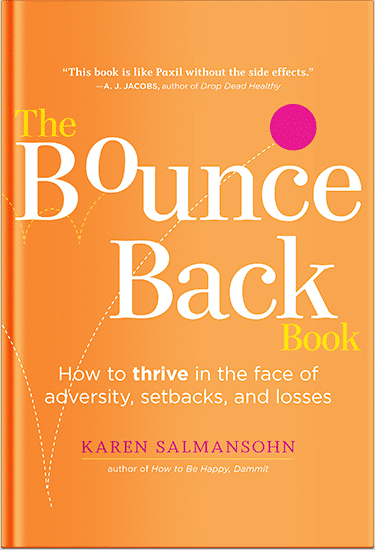 Discover how different sleep environments (noise, bedding, temperature, etc) impact your sleep cycles. Explore a number of solutions to enhance your rest and create a perfect sleep environment.
Discover how different sleep environments (noise, bedding, temperature, etc) impact your sleep cycles. Explore a number of solutions to enhance your rest and create a perfect sleep environment.
Your surroundings play an essential role in the quality of sleep you get. Many factors determine your natural sleep cycle, how well you sleep and for how long, including beddings, room light and ventilation. Below is a detailed discussion on how the sleep environment can affect your sleep cycle and ways to promote deeper, uninterrupted sleep.
Upgrading your Sleep Environment
Comfort is among the essential aspects that constitute a peaceful sleep environment. From the breathability of your beddings and stiffness of the pillows to the firmness of the mattress, your physical surroundings have the power to dictate the quality of your sleep cycle in terms of how fast and easily you fall asleep. If you wake up tired in the morning or your bed leaves you tossing and turning all night, it is time to explore mattress toppers for better sleep. These could be the solution you have been looking for to reduce pressure points and regulate body temperature (remedy for a better sleep cycle), thanks to their additional layer of softness and support.
Mattress toppers may seem like a simple element to consider in your bedding, but they play a crucial role in improving sleep cycles. Even with a modest topper, you can reduce pressure on shoulders, hips and back, helping you maintain deep sleep stages and minimise tossing. With technological advancement, topper comes in different materials, with some infused with gel or breathable latex to assist in body temperature regulation. Mattress toppers serve more than one purpose: they can help extend the life of your mattress and add comfort and support to firm and soft mattresses. Remember, your overall sleeping environment have a major impact on your natural sleep rhythm.
Factors to Consider When Buying Mattress Toppers
Despite having a mattress topper, you can still have trouble sleeping. However, selecting the right topper can transform your comfort and sleep quality. Before spending money, it is good to know the features that have the most impact.
Density and Thickness
High-density toppers are responsive, last longer and offer great support. Toppers come in different thicknesses, ranging from 2 to 4 inches. A typical 2-inch topper is suitable for newer mattresses, as it offers a subtle feel change. A 3-inch model enhances comfort for different sleeping positions, while the 4-inch version is suitable for older mattresses and side sleepers since it offers plush support.
Composition and Material Type
Every material used to make different toppers comes with its unique characteristics and benefits. For instance, latex facilitates easy repositioning since it is cool, naturally responsive and hypoallergenic, while memory foam moulds your body shape, reducing body pressure. Unlike latex, memory foam can retain heat unless it is aerated or gel-infused. Other alternatives include cotton, polyfoam and feather toppers. Choose the right one based on your heat sensitivity, allergen concerns and comfort preference.
Maintenance and Fitting
Be keen when buying mattress toppers to ensure a perfect alignment with your mattress size. An oversized or mismatch can cause stiffness in the end. Check for elastic skirts or straps for easy and secure placement. In terms of maintenance, getting removable and machine-washable covers can extend use and make upkeep easy.
Sleeping Support and Motion
Latex offers a less isolating and springier experience with additional spinal alignment and responsive support. On the other hand, memory form has a better isolating motion mechanism (contouring nature), minimising partner disturbance. If you want more support and bounce, go for latex, but choose memory foam if you are a restless sleeper or a couple that need undisturbed rest.
How Environment Affects Sleep Cycle
Most of the time, your sleep cycle is not only controlled internally, but also by the surroundings. Environmental elements like sound, air quality, light and temperature can either disrupt or improve the ability of the body to enter and maintain an uninterrupted, healthy sleep rhythm.
Room and Body Temperature
Your body tends to regulate its temperature during and before sleep (Cooling down). If your room is extremely cold or warm, it can interrupt this process, leading to waking up in the middle of the night or restlessness. It is recommended to keep your room temperature between 16 and 20 degrees to support the body‘s natural cooling process.
Light Exposure
Being exposed to light, as low as it may be, especially blue light from lamps or screens, can shift your sleep concentration, delay sleep onset and suppress melatonin (hormone responsible for sleep-wake cycle). Also, short-wavelength or bright light can alter your circadian rhythms and decrease deep sleep. Exposure to artificial lights, especially in the evening, can facilitate delayed sleep cycles and fragmented sleep. Therefore, minimal screen time or the use of low-wattage bulbs and blackout curtains can help you sleep longer and healthier with improved circadian timing.
Air Quality and Noise Pollution
Areas with high air pollution, like urban towns, contribute greatly to poor sleep quality and increase sleep disorder risks like sleep apnoea. Fine particulate matter can negatively affect sleep continuity and cause respiratory irritation. Conversely, living in greener spaces or accessing cleaner air can support rejuvenating rest and reduce sleep stress. Noises as little as running AC can disrupt your sleep cycle. This means, intermittent sounds, particularly during short rest or light sleep stages, can lead to fragmented rest and/or awakenings.
In a Nutshell
Your sleep environment has a great influence on how well, long and fast you will sleep and maintain your body in the resting state. Healthy sleeping goes beyond comfort; it involves how well your body progresses through sleep cycles. Remember, small changes in your surroundings, from noises and temperature to mattress topper, can make a big difference in your sleep cycle. Understand and optimise your sleep environment to enjoy a deeper, healthier and restorative rest every night.
P.S. Before you zip off to your next Internet pit stop, check out these 2 game changers below - that could dramatically upscale your life.
1. Check Out My Book On Enjoying A Well-Lived Life: It’s called "Your To Die For Life: How to Maximize Joy and Minimize Regret Before Your Time Runs Out." Think of it as your life’s manual to cranking up the volume on joy, meaning, and connection. Learn more here.
2. Life Review Therapy - What if you could get a clear picture of where you are versus where you want to be, and find out exactly why you’re not there yet? That’s what Life Review Therapy is all about.. If you’re serious about transforming your life, let’s talk. Learn more HERE.
Think happier. Think calmer.
Think about subscribing for free weekly tools here.
No SPAM, ever! Read the Privacy Policy for more information.
One last step!
Please go to your inbox and click the confirmation link we just emailed you so you can start to get your free weekly NotSalmon Happiness Tools! Plus, you’ll immediately receive a chunklette of Karen’s bestselling Bounce Back Book!


 Discover how different sleep environments (noise, bedding, temperature, etc) impact your sleep cycles. Explore a number of solutions to enhance your rest and create a perfect sleep environment.
Discover how different sleep environments (noise, bedding, temperature, etc) impact your sleep cycles. Explore a number of solutions to enhance your rest and create a perfect sleep environment.